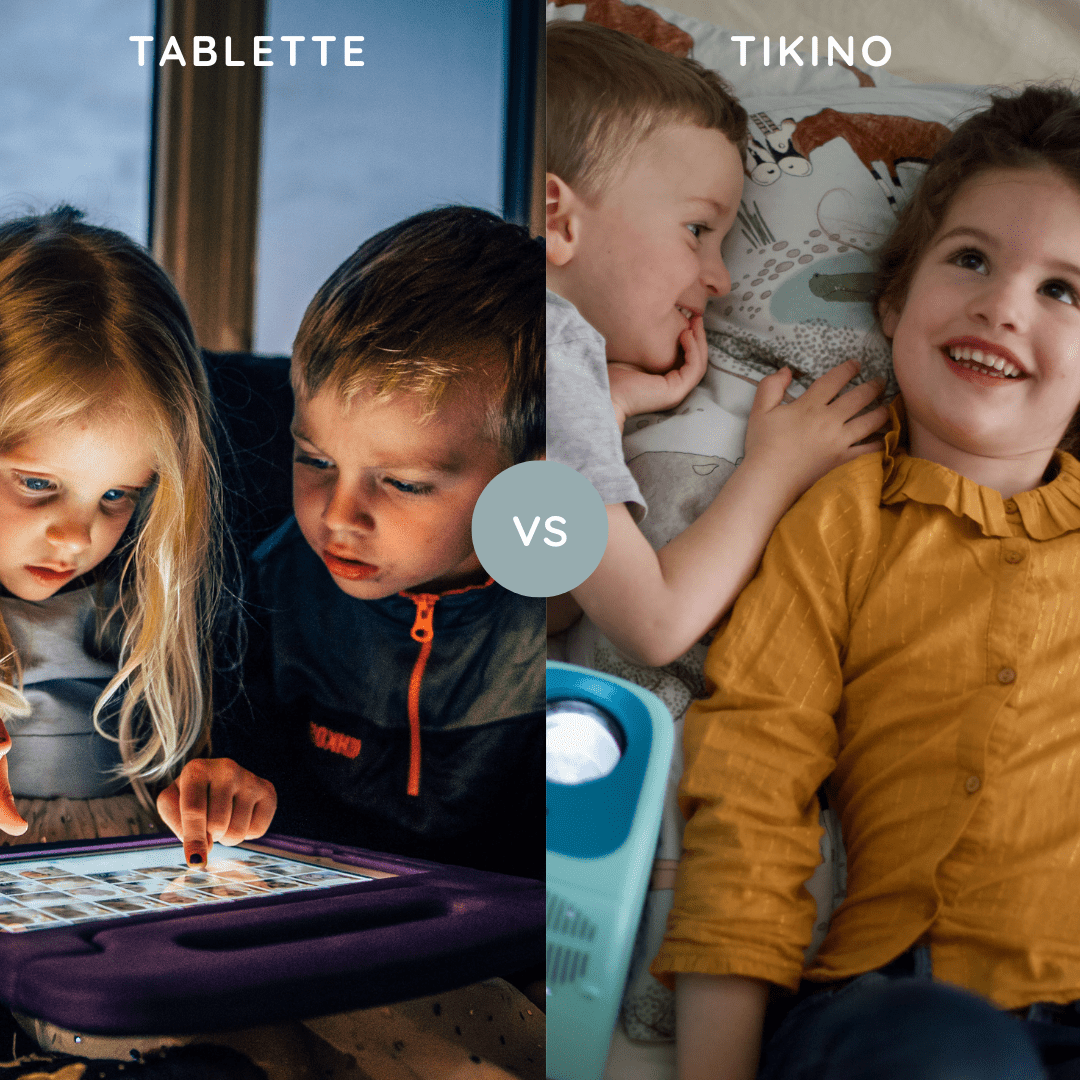The results of the comparative analysis carried out in the laboratory* are clear and confirm the qualities of our children's projector.
Tikino:
-
exposes the eye to 24 times less blue light than a tablet
-
does not disturb falling asleep and sleep quality
-
offers content that is 9 times less exciting than a “classic” cartoon
Children and electronic screens: be careful
For several years, the media and scientists have been warning us about the risks associated with the use of electronic screens (smartphones, tablets, televisions) by children: exposure to blue light, sleep disturbance, nervousness, passivity, isolation, access to inappropriate content, etc.

Tikino was born from the desire to offer children an object and quality animated content that would allow them to learn, dream and share in a fun and autonomous way, in complete safety. Audio story boxes are a great alternative, but we didn't want to give up on images.
The magic of images, differently
The image is an incredible vector of emotions and an essential learning lever: we only remember 20% of what we hear, but 50% of what we hear and see at the same time**.
Following several studies showing that the use of projection is better for the eyes than that of individual screens, we took the gamble of adapting this technology in a projector designed especially for children and of associating it with a library of dedicated content, animated slowly.
After several months of use, feedback from our first customers confirms it: the Tikino effect is instantaneous. Children are soothed, enjoy watching it together, don't throw tantrums when it's turned off, don't complain about itchy eyes...
"Varied and intelligent content, good times spent together or independently, no stress when it's time to turn it off and sit down to eat..." Anne-Laure, Tikino customer

Tikino vs tablet: match in the laboratory, clear victory for Tikino
In the summer of 2022, we commissioned the CSTB laboratory in Grenoble to conduct a comparative study of the classic use of a Tikino and a tablet. At the forefront of research on these subjects, this laboratory relies on the latest standards and scientific publications and works with the Ministry of Health and the Futuroscope in Poitiers.
Two main analyses were made:
-
stimulation of the biological clock via melanopic illumination (m-EDI): quantity of blue light received at the level of the eye, responsible for sleep disturbance, particularly in children whose lens is not yet finished
-
the intensity of visual stimulation via flickering (PstLM) of the content: which can cause headaches / fatigue / irritation
The differences are very clear:
-
stimulation of the biological clock is 24 times lower on Tikino than on a tablet: no delay in falling asleep, no disruption of sleep
-
the intensity of visual stimulation is 9 times lower with Tikino content than with classic content


A projector that is gentle on the eyes, to awaken and amaze children
It’s proven, Tikino is:
-
a gentle projection for the eyes that does not disturb sleep and falling asleep
-
subtly animated content that doesn't excite children unnecessarily
but also :
-
stories created with artists and childhood professionals to discover music, art, history, develop vocabulary...
-
an ideal format for viewing by several people and sharing moments with family
-
a “your turn” section encouraging children to be active: yoga, meditation, stories to tell
-
an object dedicated to children without advertising or inappropriate content

To order yours, click here: order the Tikino projector
Please note, quantities are very limited.
*The full CSTB report can be viewed here
**Roger Mucchielli, 1972


